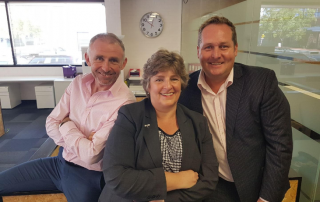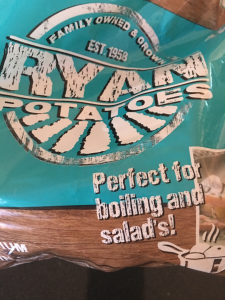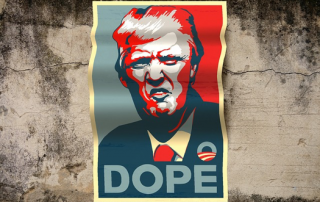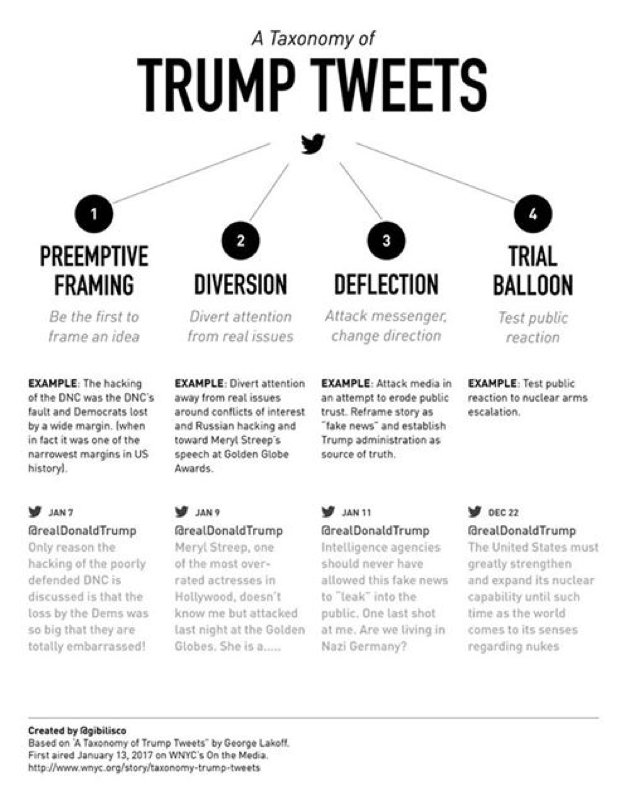Brand Newsroom 137: Questions to ask before choosing a marketing agency
Today, James and Sarah discuss how to get one of your most important business service provider decisions right — choosing a marketing agency.
Whether it’s a PR firm, an advertising company, a content marketing agency or any other communications supplier, what questions should you ask before you sign on the bottom line?
Here are some key take-outs:
• Not all agencies do everything. The first thing you have to figure out is whether you’re actually working with the right agency. Your historical supplier might not be your best possible partner.
• If you need a specialist service, make sure your agency actually specialises in those areas — rather than having an “add-on” service they don’t actually have all that much experience in.
• If you want to keep your existing agency, find someone to collaborate with to provide those specialist skills your current supplier doesn’t have.
• Ask whom you’ll be working with on a daily basis. Who is the team? You can even ask how long employees tend to stay in their agency? If they move on quite quickly, you might spend a lot of time repeating yourself or getting inconsistent work. And do they outsource?
• Ask to see examples of the work the agency has done for people in your industry.
• Have success and failure metrics for your project from the outset. That’s why you should always start with a strategy. Be sure to tell your agency what your actual goal is and make sure the KPIs reflect those goals, not vanity metrics like page views or likes.
• Make sure you can get on with them. Meet with them regularly.
• Don’t let your decision only come down to price. Understand the pricing structure, sure, but think closely about the relationship, their experience, and what their referees told you about them.
• And, finally, are they doing it for themselves? Ask to see what they’re doing in their own space. If they’re selling you blogs and they’re not writing blogs on their own site, that should ring alarm bells.
On My Desk
• Sarah’s recommendation is the Get Coleman website.
• James’s recommendation is a password or passcode manager called Private Password Manager Vault.
Have you heard the one about…
Recently the team looked at how virtual reality was changing marketing.
And here’s a discussion about low-cost options for marketing start-ups.
Like what you’ve heard?
Give us a follow on Soundcloud to get the latest episodes.
Or, you can subscribe or leave a review on iTunes.
Brand Newsroom 136: How Virtual Reality will revolutionise our marketing reality
It first came to prominence in the gaming world in the 1990s, but virtual reality is a product whose time finally seems to have come.
Marketers the world over are embracing the technology in the hope of redefining customer experience. So, how can we use it?
First some terminology:
- Virtual reality is when the user puts on a headset and their experience, everything they can see, is 100 per cent digital.
- 360 technology is when you’re locked to a spot and can look around, but with VR you can move around in the space.
- Augmented reality is like a mixture of VR and 360. The big internet brands are investing heavily in this now. It’s a display, a bit like a pair of glasses, that you can interact with in reality.
And here are the take-outs:
- There are hundreds of applications for this technology. Companies could use it for training programmes, a little like how flight simulation works. For companies in real estate and tourism there are incredible opportunities to show potential customers the kinds of things they will experience if they buy those services.
- This technology isn’t futuristic, it’s here. Agencies and brands now need to keep up with it and work out how to exploit it.
- This doesn’t have to be expensive for brands to use. It’s worth exploring your opportunities.
On My Desk
- Gav recommended HoloLens. You can see a video of it here.
- Nic’s recommendation was to buy a LinkedIn Premium account. He said it was a bit of an investment but offered a lot more functionality, which was great for business.
- Sarah said it was worthwhile checking out the Edelman Trust Barometer.
- James recommended taking a look at this article about artificial intelligence.
Have you heard the one about…
Recently James, Sarah and Nic took a close look at the communications tactics used by US President Donald Trump — and whether brands can use them, too.
And here’s a conversation about the dos and don’ts of corporate video.
Like what you’ve heard?
Give us a follow on SoundCloud to get the latest episodes.
Or, you can subscribe or leave a review on iTunes.
Brand Newsroom 135: What’s wrong with the media today
BNR’s producer, Dan Hatch, joins Nic Hayes and Sarah Mitchell to take a deep dive into what’s going wrong with the media these days — from credibility, accountability, shrinking newsrooms and falling advertising revenues to fake news and “churnalism”.
Here are some key take-outs:
- Shrinking advertising revenues have led to shrinking newsrooms and reduced quality.
- The media is more polarized than ever. We really see this in the US where the laws were changed in the 80s to remove the requirement for balance.
- Less well-resourced newsrooms mean there’s a lack of specialisation in journalism, making it harder for journalists to hold power to account.
- Journalists are working very hard but they are under-resourced.
- Media consumption has changed and the media hasn’t adapted.
- News consumers are actively looking for quality news and they’re starting to show they’re willing to pay for it by subscribing to news services they like.
On My Desk
- Sarah’s recommendation was Mic.
- Dan’s recommendation was the Facebook page, Angry People in Local Newspapers.
- Nic’s recommendation was to take the time out to meet other business owners and have a coffee. He’s doing two a week. The idea is to see if there’s a way to help each other’s businesses.
Have you heard the one about…
Recently James, Sarah and Nic took a close look at affordable marketing ideas for a start-up.
And here’s a discussion about the evasive communications tactics used by Donald Trump.
Like what you’ve heard?
Give us a follow on SoundCloud to get the latest episodes.
Or, you can subscribe or leave a review on iTunes.
Brand Newsroom 134: Low-cost options to market your start-up
The team discusses innovative and cost-effective marketing tips for start-ups. How can start-ups approach marketing to ensure they get a return on investment? And is there anything big companies can learn from how these newer enterprises promote themselves?
Here are some key take-outs:
- Earned media is a great way to get free publicity. Build your personal brand by sharing your opinions and expertise.
- Look for public speaking opportunities. Find out what audiences are looking for and be the one to share it.
- Blog well and blog often. Content marketing is a great way to build your brand and authority.
On My Desk
- Nic recommended Slack.
- Sarah recommended Michael Stelzner’s book Writing White Papers: How to Capture Readers and Keep Them Engaged.
- James recommended Guardian Labs.
Have you heard the one about…
Recently James, Sarah and Nic took a close look at the tactics Donald Trump uses to tweet.
And here’s a discussion about the dos and don’ts of corporate video.
Like what you’ve heard?
Give us a follow on SoundCloud to get the latest episodes.
Or, you can subscribe or leave a review on iTunes.
How great copy beats competition and saves you money
Are you one of those people with a loosey-goosey relationship with grammar? Do you think we’ve reached an era where punctuation and spelling are not as important as they once were? You’re not alone. One Maine company is finding out the cost of a missing comma.
If you haven’t read the New York Times article about the $10 million judgment for a missing Oxford comma, I encourage you to do so. It’s a good example of where a lack of attention to grammar and punctuation had a major financial impact to a business. Usually the brand damage isn’t so easily quantifiable.
It’s not only commas causing problems. Time’s six-figure apostrophe error in the Wall Street Journal did nothing to instill confidence in their editorial expertise. And consider this bag of potatoes with an errant apostrophe. How much do you think those bags cost to produce?
Brand damage through careless errors
Consider the tweet sent by the US Department of Education which misspelled the name of writer, historian and civil rights activist W.E.B. Du Bois.
The follow-up apology tweet contained a grammatical error. Neither instilled confidence and Twitter lit up at the irony of the Education Department getting it wrong.
I wish these were isolated cases but they’re not. Spelling errors have become commonplace in business. Poor grammar is rife. It’s common to see marketing communication confusing the words complimentary and complementary, premiere and premier, and license and licence.
Spellchecker only does part of the job
Unfortunately, the age of content provides more opportunity for brands to get it wrong because we’re doing more writing than ever before. Consider the grammatical error in Donald Trump’s inauguration poster. Spellchecker can’t save you in this kind of situation where the word ‘to’ was used when ‘too’ was needed.
There are daily examples of social media updates with careless mistakes. That might be fine for your friends and family, but what impression does it leave for a brand, especially one whose business is words? Even if the accompanying article is perfect, the damage is done.
When this happens your company comes off looking careless. At worst, you look incompetent. Given the choice between a business with clean copy and one with mistakes in their writing, most people will go with quality.
Respecting your audience
But here’s another question for you. Have you ever considered good copy might actually be a competitive advantage? When fewer people have writing skills, and even fewer respect the need for good writing, you can easily set your brand apart by providing exemplary copy for your marketing and communications. If anything, it shows you respect your readers and take extra effort on their behalf.
Believe it or not, there’s a simple fix. Send everything you write to someone who finds your spelling, punctuation, grammar and word usage problems. A copyeditor, sometimes called a subeditor, is your best bet for quality assurance in your publishing. A good copyeditor is worth their weight in gold not only for what they add, but also for the brand damage they prevent.
If you’d like more information on using a copyediting service for your business, get in touch. It’s one part of effective writing this word nerd wouldn’t want to do without. Another good tactic for avoiding brand damage in your content marketing is to brush up your writing skills. I’m teaching a Writing Masterclass in Perth on 3 May 2017. You can register here.
Like what you’ve read? Sign up to the Lush newsletter for fortnightly advice to help you market your business better, tips from our video production gurus, and a podcast or two from our favourite podcasting team, Brand Newsroom. In the meantime, you might enjoy these:
Why blogging regularly still works for business
11 Tips to write better headlines and titles
The blogging blunders you need to know: Part 2
How to deal with writer’s block [podcast with show notes]
Brand Newsroom 133: How to tweet like Donald Trump (and what to do instead)
Professor George Lakoff of Berkeley University says US President Donald Trump uses four main tactics to set the news agenda through his tweets. Here’s his analysis:
So can brands use similar tactics? Or would that be a formula for disaster? Today the Brand Newsroom team takes a look at what we can all learn from Trump’s Twitter.
Here are some key take-outs:
- Trump uses these tactics negatively and, while it has worked, more and more people are starting to see through it and his polls are slumping. It would not be a good way for brands to go to market.
- The repetition of message clearly works for Trump. Can you think of the New York Times without thinking of “the failing New York Times,” even though the paper isn’t failing?
- Some of Trump’s tactics amount to not taking responsibility for yourself and your actions, which is a bad tactic for brands. You’re breaking trust with the consumer.
- When it comes to a “trial balloon,” it’s a pretty common tactic for both politics and brands. Some people will view it cynically but it often works quite well.
On My Desk
- James’s recommendation was this article about the digital leadership gap.
- Nic recommended the Grizzly Labs app.
- And Sarah’s recommendation was Death to the Stock Photo.
Here are the links you might need
- George Lakoff’s website is here.
- And here’s that Ted Koppel versus Sean Hannity exchange Sarah mentioned.
- This is the disaster that was iSnack 2.0.
Have you heard the one about…
Recently Sarah and Nic were joined by Jamie Wilkinson of Cannings Purple to take a close look at the Cooper’s Brewery video PR disaster.
And here’s a discussion about the dos and don’ts of corporate video.
Like what you’ve heard?
Give us a follow on SoundCloud to get the latest episodes.
Or, you can subscribe or leave a review on iTunes.
















